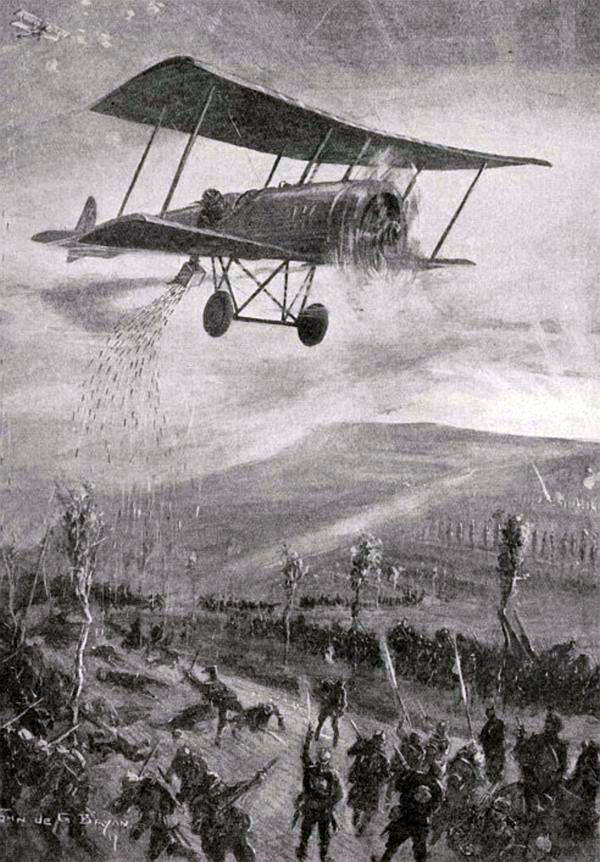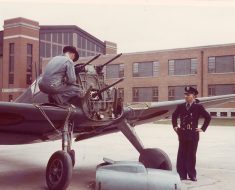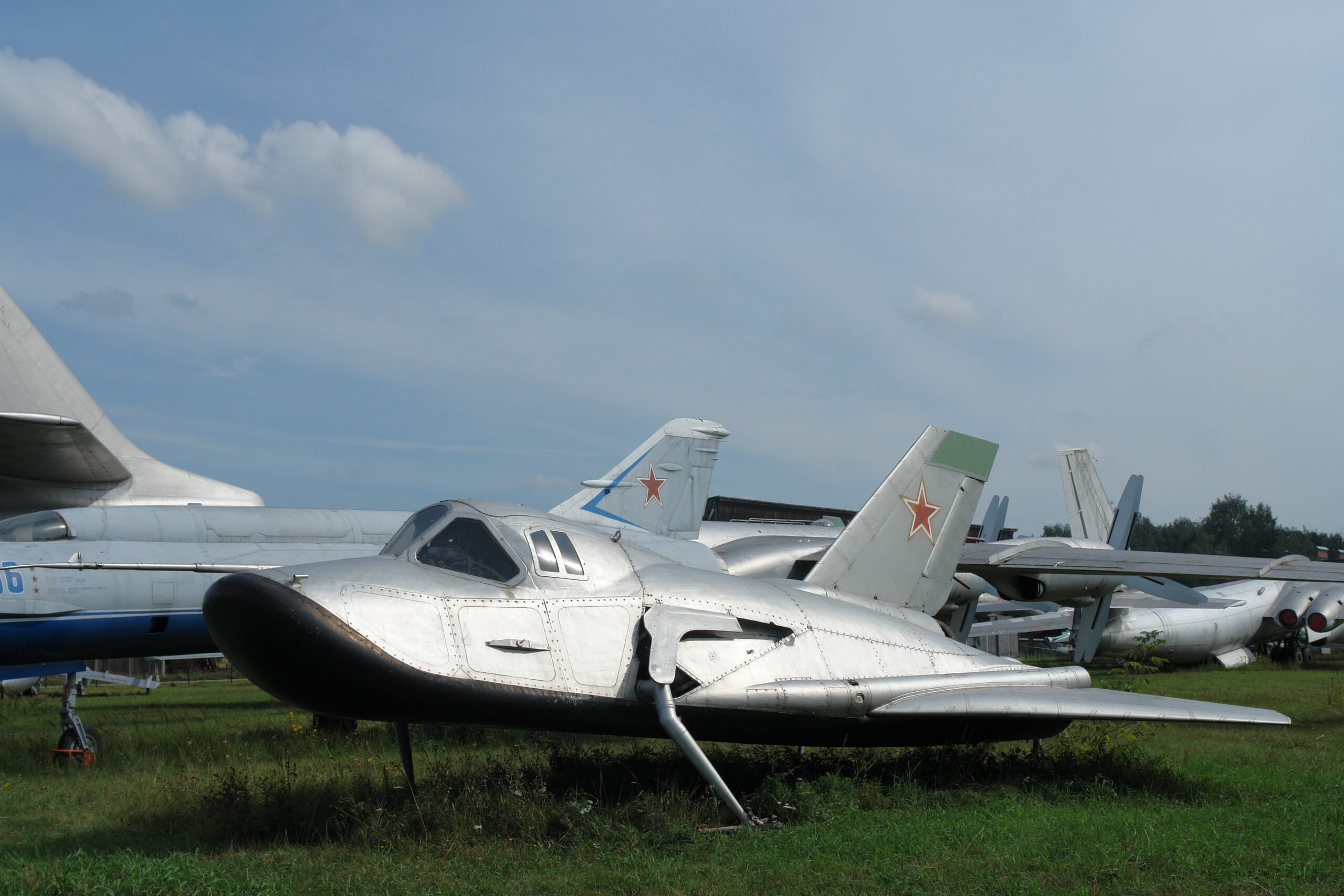Flechettes were, steel dart-like projectiles that were dropped from aircraft over enemy lines. Drawing inspiration from medieval anti-siege tools, the contemporary flechette is believed to have been innovated by the Italians around 1910.
Yet, it was the French who pioneered their use as a potent weapon dropped from the air.
Witnessing their initial effectiveness, both the British and Germans rapidly started manufacturing and deploying their own iterations.
Contents
Flechettes Origin and Description

The concept behind the flechette can be traced back to ancient weaponry, notably the dart-like projectiles that were used as handheld weapons or fired from devices like the atlatl.
The flechette, as we recognize it from World War I, evolved as a modern iteration of these ancient instruments of war.
Read More: Lady Be Good – Ghost Bomber Found in Sahara Perfectly Preserved
Flechettes were typically made of steel, an abundant material at the time and one that provided the necessary weight and rigidity for the projectile to be effective.
Each flechette was a slim, pointed dart, generally about four inches in length. Its streamlined design maximized penetration capabilities when dropped from heights.
A key component of the flechette was its tailfin. This fin, often crafted as thin vanes at the rear end of the dart, was instrumental in ensuring the flechette’s aerodynamic stability.

Vast Area
When released from an aircraft, the tailfin would ensure the flechette’s nose would face downward, maintaining its direction towards the target below.
The design harnessed gravity, with the flechette gaining velocity as it descended, thus increasing its potential impact and penetration. It’s said that a single container of flechettes could blanket an area of 500 square yards in just one release.
Read More: Boeing Plant 2 – The Factory Disguised as a Town
As aircraft began to play a more significant role in reconnaissance and combat during World War I, there was an increased need for weapons specifically designed for aerial use.
Traditional bullets and artillery shells were not always suitable for deployment from planes, especially during the early stages of aviation. Flechettes filled this gap.

Their lightweight design meant that an aircraft could carry a large number without being significantly weighed down.
Super Weapon?
Moreover, their deployment mechanism was straightforward – a canvas bag or container filled with flechettes would be released over the target area, scattering the darts over enemy lines.
Initially the concept of flechettes was seen as innovative and promising in the initial stages of their introduction.
Read More: Atka B-24 Liberator Wreck Still Sat on Aleutian Islands
Military leaders believed that they had the potential to be an effective weapon against infantry formations. The flechette was not just a manifestation of raw combat potential but also represented the rapid evolution of warfare tactics and the adaptability of armies during World War I.
Like all terror weapons, the psychological impacts, the fear, anxiety, and behavioral changes that such weapons induce in targeted populations, beyond their immediate physical destructiveness.
Terror weapons are often designed or used primarily for their psychological effects rather than their military effectiveness. The aim is to break the will, morale, and resilience of military personnel.
Impact and Effectiveness of Flechettes
In theory, flechettes were an innovative solution to engage enemy troops from the air. They were lightweight, easy to carry in large numbers, and didn’t require complex aiming mechanisms.
However, their actual impact on the war was limited.

Despite their high-velocity descent, flechettes often failed to cause significant damage. They could penetrate helmets and cause injuries, but their overall lethality was less than that of traditional firearms or artillery.
Read More: RAF Fauld – Britain’s Largest Explosion
As mentioned above, one cannot underestimate the psychological impact of flechettes. The very idea of unseen projectiles raining down created fear and panic among troops. While the physical damage might have been limited, the contribution to the war of attrition, weariness, and lowered morale was notable.
Terror Weapon
They earned the phrase ‘raining death’, however, despite the wounds and terror among the infantry, the weapon didn’t have consequential benefits for the French The accuracy of flechettes was another concern. Unlike bullets or artillery shells, which had predictable trajectories, flechettes could be influenced by wind and other atmospheric conditions, making them less accurate.

The use of flechettes, like many other weapons introduced in World War I, stirred controversies. Critics argued that such weapons were inhumane and caused unnecessary suffering. Furthermore, the risk of injuring civilians in areas near the front lines became a significant ethical concern.
Its Just Not Cricket
The injuries they could cause were gruesome. However, honorable British pilots of the Royal Flying Corp, forerunner of the Royal Air Force, considered their use to be deceitful and ultimately declined to deploy them.
Read More: Silbervogel – The Antipodal Bomber
The War Illustrated, a British wartime magazine, highlighted the Royal Flying Corps’ reluctance to use these projectiles, known as flechettes. An issue of the magazine mentioned, “Our aviators view dropping arrows as unsavory work, mainly because the enemy can’t hear them approaching and due to the severe wounds they inflict.”
Also it was not possible to drop them with sufficient accuracy.’

Charles Grey, editor of The Aeroplane magazine, wrote in a 1915 edition: ‘A friend of mine was at the military aerodrome when some of these arrows were being tested, with an unfortunate cow as the enemy.
Read More Arado Ar 234 – The World’s First Operational Jet Bomber
‘About three arrows struck the cow, and went clean through her into the ground, after which the cow died quite suddenly.’
Legacy of Flechettes in World War I
As the war progressed, the significance of flechettes diminished. The introduction of more effective aerial bombs and machine guns made these steel darts somewhat obsolete. By the end of the war, their use was limited, and they never gained the same prominence in subsequent wars.

However, the introduction and use of flechettes in World War I serve as a testament to the lengths to which nations would go in the pursuit of victory. The war spurred rapid advancements in technology and tactics, with each side striving for any advantage over the enemy.
Read More The Mystery of William Schaffner: The UFO Interceptor
In this vast landscape of innovation, the flechette stands as a symbol of both human ingenuity and the horrors of warfare.
Both the British and Germans later adopted the use of flechettes. Again, in a bit of psychological warfare, the Germans stamped some of their flechettes—mirroring the design of the French ones—with the words ‘INVENTION FRANCAIS, FABRICATION ALLEMANDE’ (French invention, German made), intending for the French enemy to see.

These flechettes were typically released from aircraft or airships in large quantities, with each canister containing anywhere from twenty to 250 darts. In one instance in March 1915, a French pilot dispensed 18,000 flechettes over German trenches in just one day.
German Airships
When dropped from significant heights, these darts would gain enough momentum to pierce through soldiers or even civilians, much like bullets.
These canisters were secured under the aircraft’s body, and a wire mechanism was activated to release the flechettes. The British also employed flechettes in attempts to damage German airships by dropping them from planes flying at higher altitudes.

However, this tactic wasn’t particularly successful. While flechettes could penetrate an airship’s outer layer, they generally didn’t inflict substantial harm. Weapons designed to ignite proved more effective in this regard. When used against ground forces and civilians, the effectiveness of flechettes varied.
Read More: Dornier Do 19 – The Bomber Designed to Win the War
They caused narrow yet deep injuries, and there are documented instances of fatalities resulting from these darts. Their primary usage was in the earlier stages of the war, though records indicate some were still in use as late as January 1917.
Lazy Dog
In the 1950s, the U.S. developed a more lethal deployment system called the Lazy Dog. An explosion weighing 225kg would discharge over 10,000 projectiles, each measuring 44mm in length.

These had the power comparable to a bullet, and with roughly 9 hits per square meter, they could potentially be lethal to anyone in the vicinity. Unique to the Lazy Dog was its quiet operation, marked only by the sound of raining metal.
During the Vietnam War, the U.S. also employed artillery that fired flechettes, often referred to as “Beehive rounds” due to the distinct buzzing sound of the darts in flight.
Read More: XB-51 – an American Bomber Beaten by a British Design
These could be set to burst immediately upon leaving the gun barrel, essentially converting the artillery into a gigantic shotgun. There are legendary accounts of victims being found anchored to trees by these darts. U.S. Army animal studies suggest that when small flechettes penetrate the skin at high speeds, they tend to tumble, resulting in injuries that are larger than expected.
Flechettes in the Occupied West Bank
Additionally, they have the ability to go deep, even through bone. In the early 2000s, an Israeli human rights group unsuccessfully campaigned to halt the use of flechettes in the occupied West Bank. The issue gained media attention in March 2008 when Fadel Shana, a journalist from Reuters, was tragically killed by flechettes fired from an Israeli defense system.
Read More: Richard Bong – Ace of Aces & Low Flying Crocodile Hunter
Interestingly, flechettes are not just relics of the past. They’ve seen recent use in artillery by both parties in the ongoing conflict between Russia and Ukraine. Numerous small darts have been located within buildings and vehicles in Bucha, a city near Kyiv, the capital of Ukraine.
These dart-like projectiles have also been found by forensic experts and pathologists within the skulls and chests of individuals while examining bodies from mass graves situated north of Kyiv, as reported by the Guardian.
Vladyslav Pirovskyi, a Ukrainian forensic expert, told the publication, “In both men and women, we found these slender, nail-like items, as did some of my peers in the area.
Due to their slimness, they are quite challenging to detect within a body.” Most of these bodies were found in the Bucha-Irpin area.”



